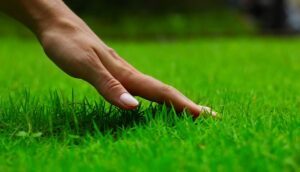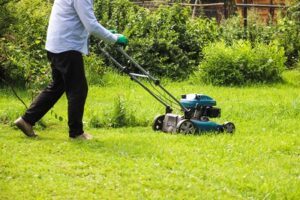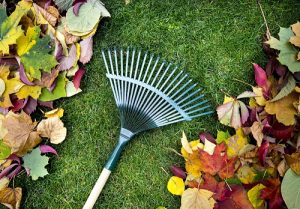 A home’s curb appeal is what potential buyers will first see. In preparation for selling a house, outdoor landscaping is often overlooked or neglected. A well-maintained and attractive landscap can increase the home’s value by as much as 10%
A home’s curb appeal is what potential buyers will first see. In preparation for selling a house, outdoor landscaping is often overlooked or neglected. A well-maintained and attractive landscap can increase the home’s value by as much as 10%
It is best to start cleaning out your yard about a month before your house goes up for sale. This will give you enough time so that everything looks perfect and you don’t appear to have rushed to do it. These tips will help you to quickly improve your yard and sell your house.
Landscaping Tips To Improve Your Lawn
Outdoor containers can be improved.
Large tropicals are a great addition to the patios and doors that would-be buyers use to enter and leave the house. These displays show the many design possibilities that container plants offer.
Make sure to clean up the mulch.
A new mulch layer can make a garden look better. Mulch adds color to the plants and enhances their contrast. Mulch is also relatively inexpensive and simple to apply.
Get some color right away!
The landscaping Myrtle Beach will pop with seasonal color, and flats made from annuals are relatively affordable. You can either go for a bold splash of color or a monochromatic look that complements the style of your home.
Form unsightly, overgrown trees or shrubs.
It doesn’t matter what season it is, it’s a smart idea to tackle any neglected pruning chores. There’s nothing that says neglect like a bunch dead branches. This is a way to show that your well maintained lawn and house. Pruning deciduous shrubs and trees at any time is acceptable.
Plant perennial plants.
Don’t let herbaceous perennials or annuals look shabby. Replace a plant that is in poor condition or put a decorative pot in its place.
It’s a great time to get rid of any plants you don’t want to bring with you to your new place. If you are going to remove any plants from your landscape and have not done so before, you must inform the buyer. This is only fair and many states have restrictions on the removal of plants from the landscape.
Make sure to clean up the water features.
Remove any algae and leaves, and clean the filters to make sure that the water is clear. A water feature that isn’t looking good or functioning properly can quickly turn off potential customers.
You should take care of irrigation problems.
Repair any irrigation system problems. Repairs to an irrigation system can be costly and you don’t want to pass the cost on to the buyer. If you have an automated system, provide information about the irrigation schedule. Provide instructions on how your system works and suggest the same watering schedule as you have used.
Repair faucet leaks.
Leaking faucets can indicate other plumbing problems, which can cause buyers to be dissatisfied.
Water your plants at least half an hour before your scheduled time if you have received sufficient notice. Watering reduces the glare from paved surfaces and sends the message that your plants have been well-maintained. To show your irrigation system is working well, you might consider running it.
Label as many plants and flowers as you can.
This will allow the buyer to identify each plant by name and help them with their research. You might also consider keeping a complete plant inventory in a scrapbook and leaving it on a table for potential buyers to peruse as they tour your house. This simple lawn care step, regardless of whether you are a gardener or not, can make a big impact on potential buyers.
Clean dirty surfaces with a power washer
To clean paver surfaces, you can rent or buy a power washer. You can make grimy and dirty surfaces look like new in no time. You can also use power washers to clean fences and brick or vinyl siding.
Call Conner’s Lawn Care Service now if you need professional help in maintaining your lawn.
Conner’s Lawn Care Service
Myrtle Beach, SC
843-504-4901
http://connerslawncare.com/
 You might be curious to know when you will see lawn care results if you are just getting started with a
You might be curious to know when you will see lawn care results if you are just getting started with a  One of the most important tasks you have to do as a homeowner is maintaining your lawn and landscape. There are many
One of the most important tasks you have to do as a homeowner is maintaining your lawn and landscape. There are many  Although pre-emergent herbicides are an essential tool in a weed management program, timing their application can prove difficult. We’ll be discussing key
Although pre-emergent herbicides are an essential tool in a weed management program, timing their application can prove difficult. We’ll be discussing key  One of the many tasks included in your regular
One of the many tasks included in your regular  Spring is the best time to prepare your lawn for summer. You can have a healthy, fresh lawn in the spring and enjoy the beautiful weather. With proper
Spring is the best time to prepare your lawn for summer. You can have a healthy, fresh lawn in the spring and enjoy the beautiful weather. With proper  One of the many goals of homeowners is to have the perfect lawn and landscape. It’s been just a few months since the new year started and you still have the opportunity to start anew.
One of the many goals of homeowners is to have the perfect lawn and landscape. It’s been just a few months since the new year started and you still have the opportunity to start anew.  Spring is marked by the return of the first crocuses and daffodils. These signs are also a sign that your lawn is ready for the growing season. These
Spring is marked by the return of the first crocuses and daffodils. These signs are also a sign that your lawn is ready for the growing season. These  Overseed
Overseed When you’ve done everything from watering, weeding, down to edging but still can’t get the lawn that you want, you must be doing something wrong. Check out the most common
When you’ve done everything from watering, weeding, down to edging but still can’t get the lawn that you want, you must be doing something wrong. Check out the most common  It is a widely known truth that the best method to make sure a thick, green, healthy and balanced lawn in the spring is to give it some well-timed care in the winter — in other words, right now. However, according to
It is a widely known truth that the best method to make sure a thick, green, healthy and balanced lawn in the spring is to give it some well-timed care in the winter — in other words, right now. However, according to